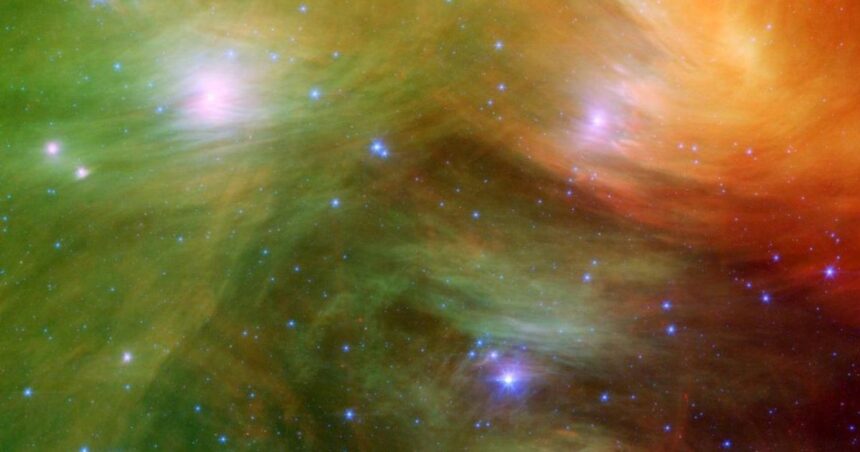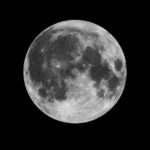Astronomers marveled at a stunning view of the Pleiades star cluster, also known as the Seven Sisters. This beautiful cluster, located 445 light-years away in the constellation Taurus, is surrounded by sweeping clouds of dust. Captured by the infrared camera on the now-retired Spitzer Space Telescope, this image reveals the cluster in breathtaking detail.
While commonly associated with seven bright stars, the Pleiades star cluster contains over a thousand stars loosely bound by gravity. The brightest stars, named after the Seven Sisters of Greek mythology—Alcyone, Asterope, Celaeno, Electra, Maia, Merope, and Taygete—stand out prominently in the image.
The Spitzer Space Telescope captured this image using infrared wavelengths. The colors in the picture correspond to different infrared wavelengths:
- Light with a wavelength of 4.5 microns appears blue.
- Light at 8 microns is green.
- Light at 24 microns is red.
These colors highlight the intricate structures and patterns within the dusty clouds surrounding the Pleiades.
The Pleiades have been a source of wonder and inspiration for millennia. Ancient cultures around the world have myths and legends associated with these stars. In Greek mythology, Zeus placed the Seven Sisters in the sky to protect them from the hunter Orion. This star cluster continues to captivate stargazers today with its beauty and historical significance.
For those who want to see the Pleiades from the ground, the best viewing time is from November through March. In the Northern Hemisphere, you can find them toward the south, while in the Southern Hemisphere, look toward the north. A pair of binoculars can enhance the viewing experience, revealing more stars and details within the cluster.
The Pleiades’ stars are relatively young, at around 100 million years old. They formed from the same molecular cloud and are still moving together through space.
The dust clouds surrounding the stars are not remnants from their formation but rather a separate interstellar material that the cluster is passing through. This interaction between the stars and the dust provides valuable information about the dynamics of star clusters and the interstellar medium.
Astronomers study the Pleiades to learn more about stellar formation and evolution. The stars in this cluster are hot and bright, with strong hydrogen lines in their spectra, characteristic of young stars. By observing the Pleiades, scientists can gain insights into the processes that govern the life cycles of stars.





